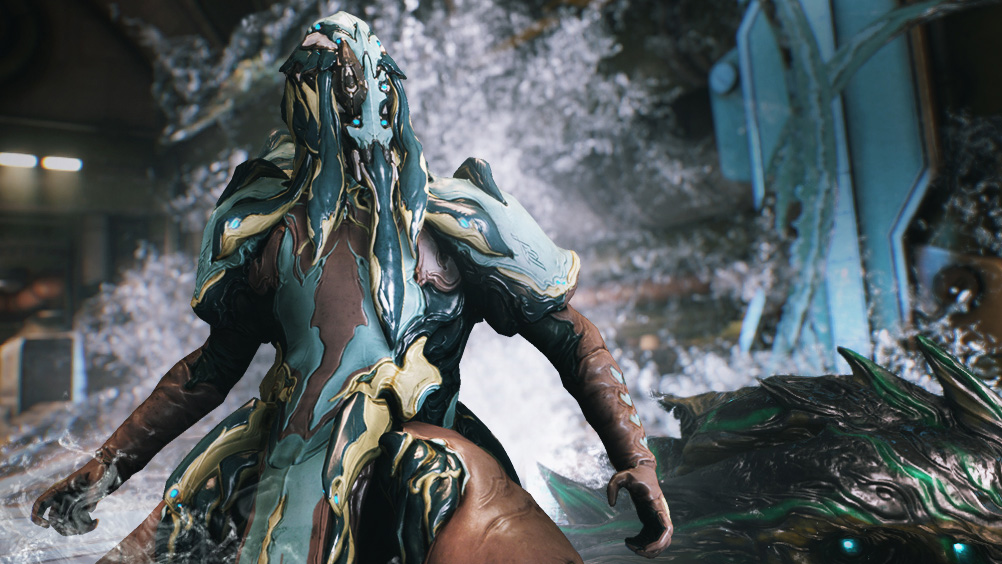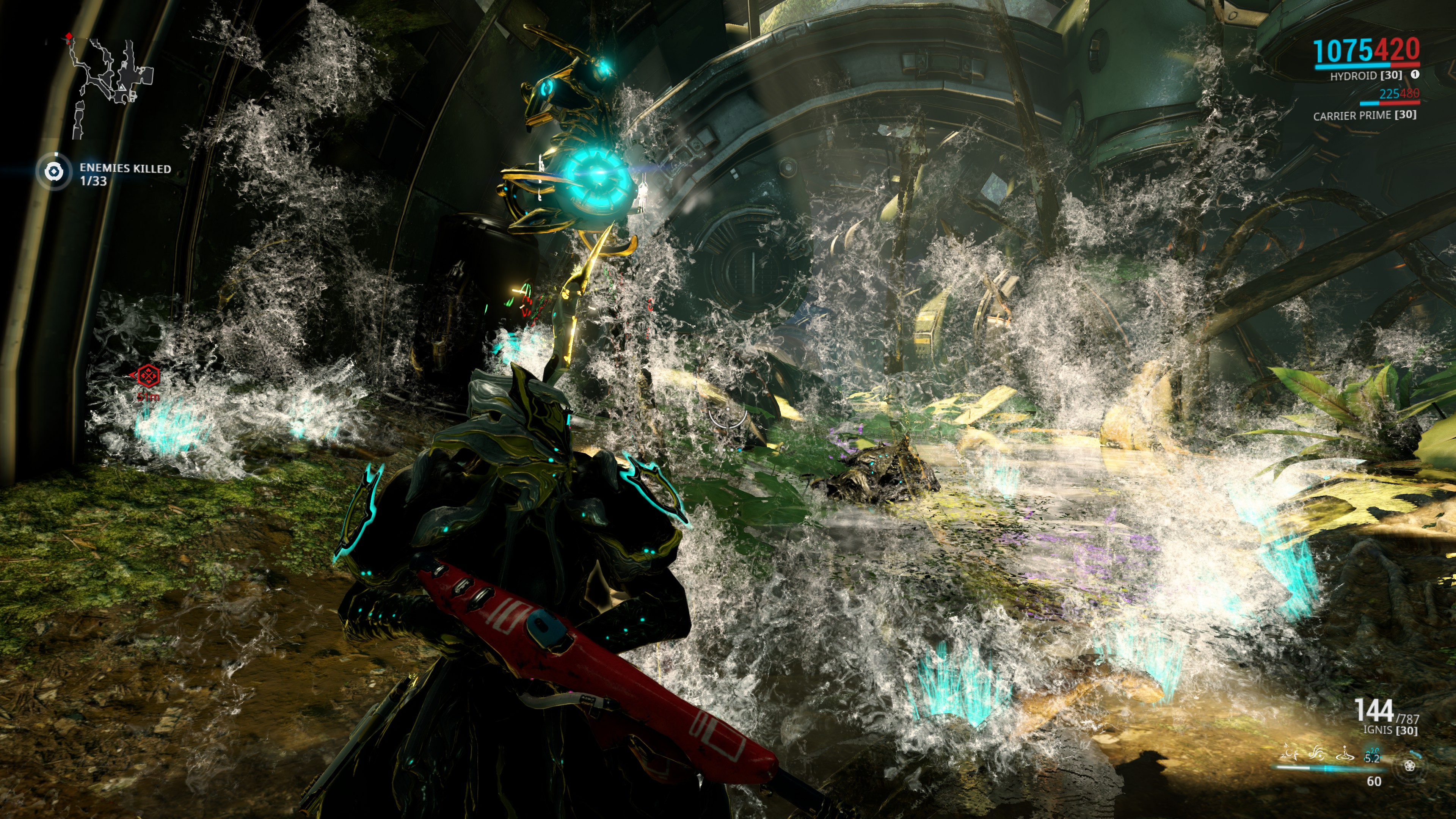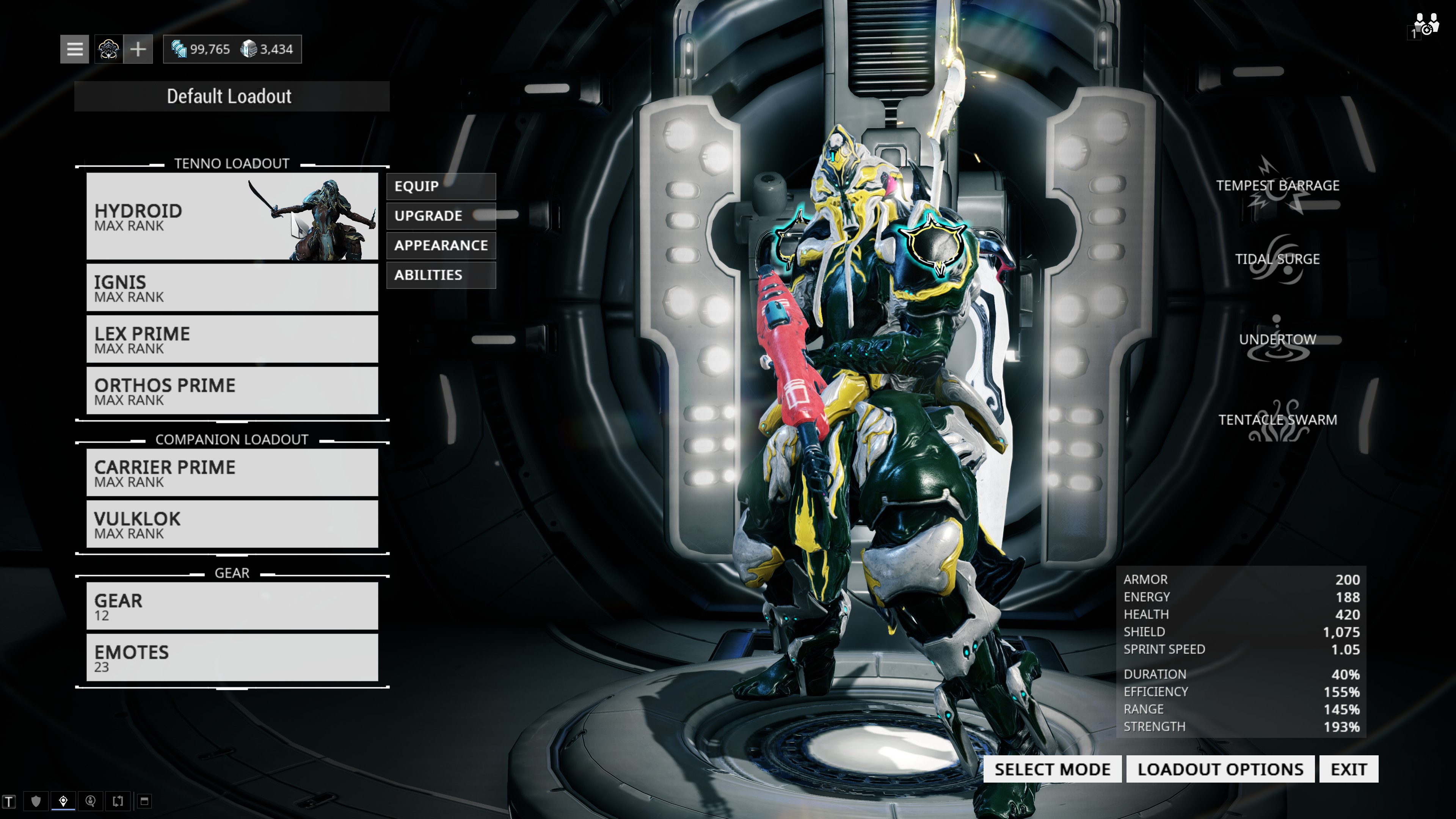Warframe's new robot Cthulhu man is a great example of how to rework a character class
Hydroid always looked cool, but new abilities make him a more fun, versatile character.

Warframe has itself a look. It's all slimy, fleshy edges and organic industrial complexes—like if H.R. Giger designed Alien's Nostromo instead of the dripping xenomorph that stalked its bulkheads. I love it, personally, and few of the high-speed looter shooter's character classes, the titular warframes, embody that meat and metal design like Hydroid.
Hydroid was first released in 2014, with abilities that let him crowd control enemies and move around quickly as a surge of water. The slippery devil recently got a series of ability tweaks, coinciding with the release of a juiced-up variant called Hydroid Prime. Prime hunting—running missions to earn the loot needed to construct the more powerful version of each frame—is a key part of Warframe's endgame, so it's usually an exciting excuse to revisit old, favorite classes. Until a total rebirth in an August patch, that wasn't the case for Hydroid.
Prior to his rework, Hydroid was very few people's favorite anything. Which is a crying shame: the bedraggled, tentacle-faced mech who summons swarms of liquid tendrils from tears in reality has always dripped with visual flair and personality. Hyrdoid's personality simply never applied to the way most people play him. That basically amounted to strapping on a loot drop-enhancing mod and spamming the aforementioned swarm ability to farm crafting materials.
Hydroid, who looks like a chubby robot Cthulhu and melts into puddles, always deserved a gameplay identity as interesting as his aesthetic one. Thankfully, last month's rework offered just that, and I've been having a blast with it.

Chief among the changes is a charge system on half of his abilities. Hydroid is the first frame that can wind up techno-spells, at the cost of extra mana, for increased damage and duration. That's critical for his liquid airstrike skill, Tempest Barrage, since it can also be modified to reduce the armor of every enemy standing in it (a tremendous boon in Warframe's high-end PVE). The skill's damage output was previously a joke compared to the game's myriad offense-focused frames. Now it's a more useful support skill that sets up kills on beefier targets.
Meanwhile, developer Digital Extreme's has leaned into the character's "terror from the deep" vibe even further. When Hydroid becomes a living lake, using the skill Undertow, he can launch individual tentacles from a distance to drag foes into his mass, rather than just wait for them to walk into the trap. Trapped enemies are slowly drowned with ever-multiplying damage. Undertow can also be exited and re-entered at any time using Tidal Surge, which transforms the hero into a rushing tidal wave that drags enemies along.
I've taken to dragging enemies into place with Tidal Surge, dividing them with Undertow, then hammering their armor off with Tempest Barrage. The slick, crowd controlling combo makes Hydroid unique among his peers. While most classes in Warframe have some crowd control, few focus on it entirely.
Keep up to date with the most important stories and the best deals, as picked by the PC Gamer team.

Hydroid, who looks like a chubby robot Cthulhu and melts into puddles, always deserved a gameplay identity as interesting as his aesthetic one.
Hydroid now fits that manipulative niche. He gives fellow players in the co-op heavy game more breathing room: room to slide, wall-run, double-jump, and glide their way into clones and monsters just begging to be slapped to death by weird, electrified nunchaku. Or... what have you.
It's fun to do, too. As Hydroid I can endlessly flow from one skill to the next. It makes carving up the battlefield feel seamless in a way that certainly wasn't possible when the class was nothing but a glorified tentacle turret.
That's good for a game that could sorely use a more diverse supporting cast. Warframe's sole "true" support class, Trinity, currently dominates demand. The recruitment channel is always slammed with people urging Trinity players to come restore their health and mana for free. Those that don't support probably play one of Warframe's many one-android armies, like Nidus or Inaros. These popular archetypes eat damage and spew back more of the same.
Digital Extremes loves to pile on more and more things for players to do within Warframe—such as the rapidly approaching Plains of Eidolon update, which promises "open zones," surface-to-jetpack combat, and spindly kaiju battles. But Digital Extremes isn't always as good at implementing new methods to play that content, which is what makes Hydroid such a great rework for Warframe as a whole.

With loot as their prime motivator, Warframe players naturally gravitate toward what gets them the best stuff most efficiently. So, plenty of Trinity players are happy to grease strangers' wheels. It gets them what they want, too. It also makes Warframe's sprawling selection of mission types feel awfully similar over time.
The improved Hydroid offers a new angle of attack. You can use skills much more efficiently when enemies are hung up on cosmic tendrils, drowning in robo-juice, or bunched up for grenade fire. Nothing gets my mental gears turning like the possibility of new weapon and skill combos that feed into that same thirst for efficiency as optimizing the loot grind.
At the same time, nobody is sacrificing Hydroid's original selling points. He's still good at farming drops and materials. In fact, crowd control is put to best use on the endless, wave-based missions where farming in Warframe is most popular.

He still looks good, too. I personally prefer the giant arthropod look of his original design, but Hydroid Prime's more piratical bent isn't too shabby. Just as long as I can still equip him with the helmet that gives him a cute little anglerfish dangly, I'm happy. More importantly, he looks cohesive with his new kit. All those wiggly tentacles and blubbery protrusions communicate his lurking, scheming nature before you've even taken him for a spin.
It all works in concert to make a warframe that feels different to inhabit than any other—one that will hopefully open up new cracks in the Warframe formula. The biggest reason I've been able to devote more than 800 hours to the shooter is precisely because it can feel so different from login to login. Warframe will likely never stop bolting flashy new systems onto its existing skeleton. However, if Hydroid is any indication, it seems the game can just as deftly improve the subtler, more common ways I shake things up between sessions.

